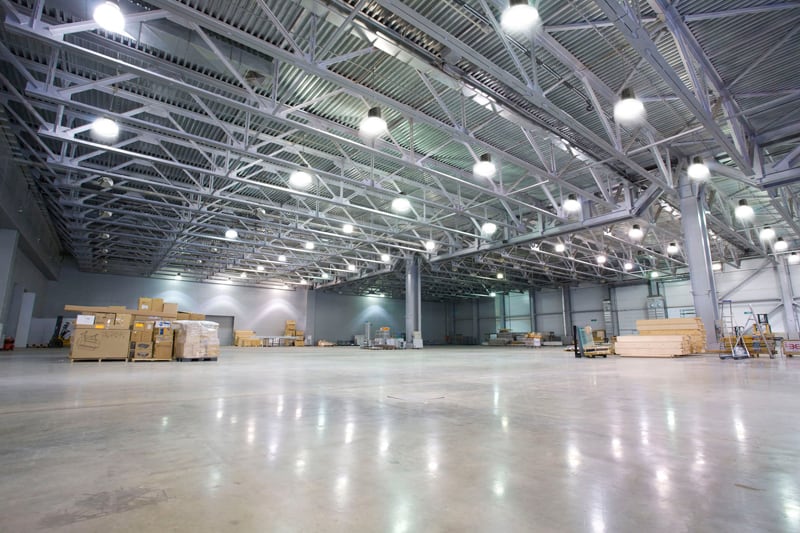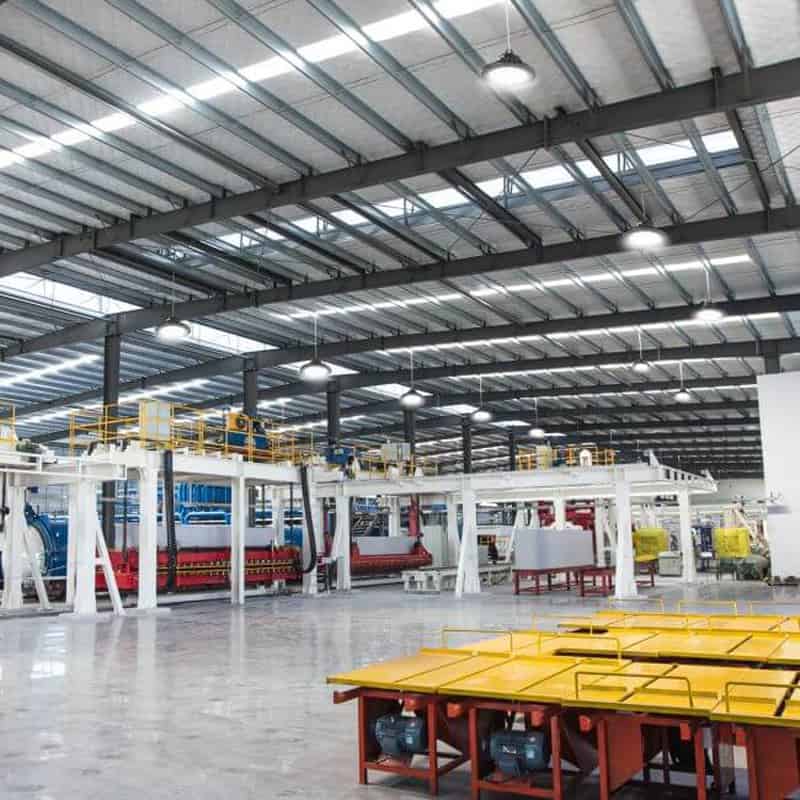Bay lighting is an essential aspect of any commercial bay. They generally fall into two categories- low bay lights and high bay lights. We will go through what high bay lights entail and why choosing LED options may be the best option for your space. Here we go:

What is high bay lighting?
High bay lighting is a form of bay lighting used in lighting spaces with high ceilings. Examples of such facilities include department stores, sporting halls, and warehouses. The term high bay lighting does not refer to a light fixture but rather the lights’ positioning. As a result, many lights are considered high bay lights if:
- They can adequately light spaces with heights of 25 feet or more
- They can produce a light output of at least 10,000 lumens
High bay lighting is most practical in tall and wide facilities which require uniform lighting through their expanse. For shorter spaces, low bay lighting is more effective as it reduces energy costs.
High Bay vs. Low Bay Lighting
What is the main difference between high bay and low bay lighting? We have stated that using high bay lighting like https://www.lepro.com/led-bay-light works for spaces that are at least 25 feet high. Other than vertical distance, is there another critical difference between these bay lights?
Sure! Their mounting positions. With low bay lighting, the positioning takes place at a mid-level. Additionally, it is not an exact science, and people can play around with the setup. Installing a 220W dimmable linear LED high bay light, on the other hand, requires a lot more. You must think about components, fittings, and the general layout when installing high bay lights. If you do not position them with the correct spacing, the cast light does not meet the facility’s lighting needs, and this harms the quality of the light output.
Can you use low bay lights for high bay lighting? No. These lights have less power, and if used in high bay lighting, they show spotting, even with the correct spacing in play. Low bay lights work best at distances less than 25 feet. What’s more, these lights require closer spacing, and you would end up incurring a higher cost in buying added fixtures.
Applications of these two bay lights also differ. Look at it this way. High bay lights feature robust designs that can withstand the effects of corrosive substances. For example, warehouses and manufacturing halls often feature harmful substances which can damage electrical components. High bay lights can work in facilities with high concentrations of pollutants, while low bay lights cannot.
The final key difference between high and low bay lights is their appearance. Low bay lights are much closer to the ground and are, therefore, visible. Most people go with aesthetically appealing lights to take advantage of this visibility. High bay lights, on the other hand, are more simplistic. They take on more of an industrial style and are barely visible. Instead, people see the cast light.

Where can you use high bay lighting?
These lights are suited for any large spaces with high ceilings above 25 feet. They can, therefore, find a home in:
- Warehouses: These spaces are enormous, which often poses a challenge in ensuring they are well-lit. Unfortunately, poor lighting can pave the way for accidents that can cause human harm or product damages. Using high bay lights ensures that light penetrates from all angles, keeping the occupants safe.
- Industries: These are yet other spaces that require adequate lighting for both productivity and safety reasons. Given that most industries run round the clock, having effective lighting day and night is paramount. High bay lights fulfill this need with ease.
- Loading Bays: For smooth operations in the loading bay, people need to be alert and aware of their surroundings. High bay lights ensure that these busy areas remain well-lit, making it possible for the business to run round the clock.
- Garages: A lot can go wrong in a poorly lit garage. From accidents to mugging, users need to be on the lookout for any problems. High bay lights can amplify the visibility and security in these areas.
What high bay lights can you use?
The market is awash with high bay lights, including fluorescent and HID lights, among others. However, of all these, LED lights take the day as they come with many benefits. These include:
- Reasonable Costs: In the past, getting LEDs came at a steep price. However, this has since changed, and these lights cost almost as much as other bulbs.
- Energy Savings: LEDs are environmentally friendly. Not only do they not emit any IR and UV rays, but they also consume limited energy. Unlike other bulbs, which rely on substantial power draws (wattages) to produce high brightness levels, LEDs use very little. As a result, installing LEDs can help you save as much as 40% to 80% in operational costs. Plus, they produce an equal or even better light output than their counterparts, even with these cost savings.
- Visibility: LEDs produce high brightness levels. To make matters even better, they cast uniform light, free of spots. As a result, your facility not only looks brighter but also feels safer. So, if you use these lights in a commercial facility, more people would be willing to walk in and shop for items.
- Reduced Maintenance: Given that LEDs last tens of thousands of hours, they can last you through the years. Some lights even work for up to two decades! Moreover, they do not require maintenance.
How Should You Choose LED High Bay Lights?
First, you should think about why you need the lights and how you want to use them. For example, if you’re going to illuminate an ample storage space, you will not need much lighting. However, if you want to use the lights in a supermarket, you may want more illumination for increased visibility.
Secondly, you must consider the height of the building. Buildings taller than 25 feet require at least 33,000 lumens, while those between 10 and 15 feet need 10,000 to 15,000 lumens. Finally, you must think about the spacing, which comes down to how bright you want the space to be.
All the best!
